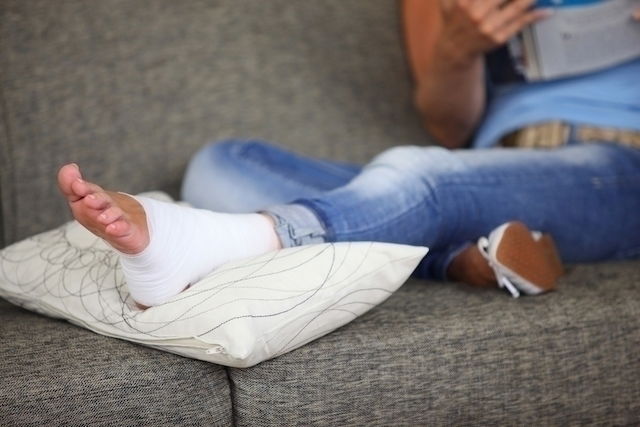To speed-up wound healing, it is important to care for your wound and equally important to care for your overall health. You can promote recovery by maintaining a healthy diet and avoiding damaging habits, like smoking, alcohol and a sedentary lifestyle.
Optimal blood circulation is essential for blood to reach the wound to ensure adequate healing. If there is not enough blood reaching the wound, healing can be delayed. It is always important to keep the wound clean to prevent infection, which can also delay healing and affect your general health.
These are some ways to speed-up wound healing and prevent scarring and other complications:

1. Cleansing and dressing changes
Simple wounds, like a cut or scratch, should be cleaned right away to remove bacteria and viruses. This will help to prevent the development of an infection. Cleansing can be done with saline or warm water and mild soap.
Surgical wounds or wounds that are very serious and deep also require cleansing, but these should be done with saline under sterile conditions. Wound care and dressing changes in these cases should be done by a health care professional. If the wound is fresh and very dirty, you can squirt saline over wound to clean it up before seeking medical attention.
Severe wounds require a dressing, particularly in the first 24 hours of the wound before it starts scarring. This will help to prevent bacteria from entering into the wound area.
2. Apply heat to the wound
Applying a hot compress over the dressing or wound for 15 minutes will increase blood flow to the area, which will increase nutrients and and cells in the area to speed-up healing. This technique should be done 2 to 3 days per day only after a scarring crust starts to appear over the wound. You should not apply heat to fresh wounds.
If the area becomes swollen or painful, remove the hot compress and do not apply for the rest of the day. You can also opt to apply a compress for a shorter time.
3. Keep the wound elevated
If the area around the wound remains swollen for over 2 days, it is important to elevate it to reduce fluid accumulation and promote blood circulation. This type of swelling is more common in people with cardiac or circulation problems, and normally happens in leg wounds. You should elevate the wound, if possible, at least 20 cm over heart level at least 3 times per day or whenever possible.
4. Eating omega 3 and vitamins A, C and E
Food that is rich in omega 3 (e.g. salmon, tuna or chia seeds) and vitamin A, C and E (like orange, mango, tomato or peanuts) are a great way to stimulate tissue growth to help with scarring and skin cell production.
You should also avoid foods that interfere with healing, like sugar, sodas, chocolate milk and fatty pork, as avoiding these foods can speed-up healing.
5. Apply healing cream
Healing creams or ointments are a great way to accelerate healing, as they can provide important nutrients for regeneration of a new skin later. They can also reduce inflammation that interferes with healing.
Nonetheless, these creams should be used 3 to 5 days after the wound onset and under medical supervision. The doctor may opt to prescribe an antibiotic cream if the wound is infected.
Phases of wound healing
Wound healing and repair can be divided into 3 phases:
- Inflammatory phase: This phase lasts 1 to 4 days, and is characterized by vasoconstriction of the blood vessels to prevent hemorrhage. The vessels will then start to dilate, so that blood can reach the injured tissue with the cells necessary for healing. You may experience swelling, redness and pain as a result.
- Proliferative phase: This phase lasts between 5 and 20 days, and is characterized by the formation of collagen and other fibers that help to close the wound.
- Maturation phase: This is the longest phase, and can last for one month or several years. The body continues to produce collagen and correct imbalances within the wound, both which will gradually decrease over time.
One one these phases does not occur completely due to lack of blood or infection, healing will be compromised and the wound can become chronic. This can happen with a diabetic foot wound for example, which requires wound care for several months or years.
When to see the doctor
Although most wounds will heal without any major complications, there is always a risk for local infection. It is important to seek medical attention if you experience any of the following:
- Intense swelling that does not improve within 3 days
- Presence of pus in the wound
- Excessive bleeding that saturates dressings
- Very intense pain
- Difficulty moving the affected limb .
In addition, other symptoms like persistent fever or excessive fatigue may indicate that the wound is infected, and therefore these symptoms should also be assessed.






























